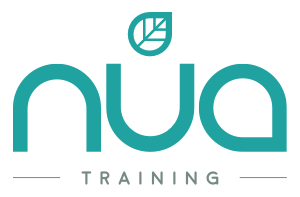The world of digital advertising and media can seem complex, particularly as it is full of industry jargon. If you are new to the industry here is our ‘jargon-busting’ guide to help you understand what the most common terms you will come across mean.
Ad Exchanges: These are the virtual marketplaces that connect sellers (the website publishers) and buyers (advertisers).
Above the Fold- ATF ads are visible on the screen without needing to scroll. Below the Fold are ads that are not visible without scrolling
Ad tag: A small piece of code that defines the ad space where ads display on a website. It includes parameters that describe the inventory advertising campaigns can target, which may in turn display ads in the ad space.
Click through: The action of clicking an ad and being taken to another web page via a hyperlink.
Clicks: The number of click throughs having occurred as a result of a user clicking on an ad and being redirected to an advertiser’s page.
CDN: Content delivery network, a distributed system of computers that increases bandwidth for the client by providing copies of creative content (such as media files and metadata) at various points in a network. Creatives are typically hosted on a CDN.
Conversion rate (CVR): The percentage of visitors to a website who sign up for advertised offers or buy advertised products. Proven high conversion ratios (via web analytics) add value to a website’s inventory.
Cookies: Small text files sent from a web server to a browser, then returned by the browser each time it logs on to that server. Advertisers use cookies to monitor the number of ads that have been shown to a visitor, while they are used by websites to gauge numbers of unique visitors.
CPC: Cost per click, a pricing method which calculates cost based on the number of times a user clicks on an ad.
CTR: Click-through rate, the percentage of impressions that results in a click through. For example if a banner was clicked on 87 times after being shown 1000 times, it would have a CTR or click-through rate of .087 or 8.7% (87/1000 = 0.087×100 = 8.7).
DSP: Demand-side platform, a platform or provider that allows advertisers to manage multiple ad exchange and data exchange accounts through one interface, often in real time. It matches audience data with inventory from multiple media sites to put ads in front of the right consumers at the rights times. It uses sophisticated targeting and optimisation algorithms to establish the value of a given impression and pace a bid automatically.
Header bidding: A monetization tool that exposes each impression to programmatic demand before calling the ad server. This lets publishers realize the true value of their direct and indirect inventory in real time.
Impression: A single display of an ad on a web page, mobile app, or other delivery medium.
Influencer: Someone who is an expert in a certain field and, or have a large following. Influencers therefore hold a lot of power in communicating their opinions to their following, perhaps affecting their opinions and behaviour.
Native ad: An advertisement designed to blend in with the appearance and tone of the editorial content it runs alongside.
Online Data Providers: Third party companies (such as Nielsen, Experian, LiveRamp and others) that help advertisers and their agencies identify target consumers and the behaviors that go along with them
Pageview: One web page, served once, to one user or viewer.
Pixel: A contraction of picture element, a pixel refers to a single point in a graphic. Ad units are typically measured in pixels, for example the default 468×60-sized banner.
PMP: Private marketplace, the packaging, offering, and selling of high quality inventory to a limited set of buyers.
Pre-roll: In-stream video ads that play before video content.
Programmatic: As defined by Winterberry, programmatic is automation technology through which media buyers and sellers align organizational processes in support of ongoing, channel-agnostic customer engagement (and allowing for the continuous optimization of that effort as business strategies evolve).
Rich media: Ad technology that features more refined images as well as audio and video in the ad. Rich media ads frequently allow visitors to interact with a banner without leaving the page on which it appears (e.g., movie ads that expand and play a trailer on the host page).
R.O.I: a return on investment is any business generated above that initial investment in media.
ROS: Run of site, ads that will appear anywhere on a website.
RTB: Real-time bidding, auctioning online inventory within an ad exchange. Buyers bid for the impression based on the value of the user, whereas the seller sets pricing floors and awards the impression to the highest bidder. The auction process takes place in milliseconds, which is why the process is referred to as “real-time”
SSP: Supply-side platform, a platform or provider that allows publishers to manage and optimize revenue for their inventory from multiple sources, often in real time. One SPP vendor can enable publishers to work with multiple demand-side channels, including Ad Exchanges and DSP’s
Unique users: A site’s total number of users or visitors over a certain length of time. Accuracy depends on each user logging in with a unique cookie to access the site, such as a different browsers
With thanks to OpenX and Media Maths for some of the definitions
